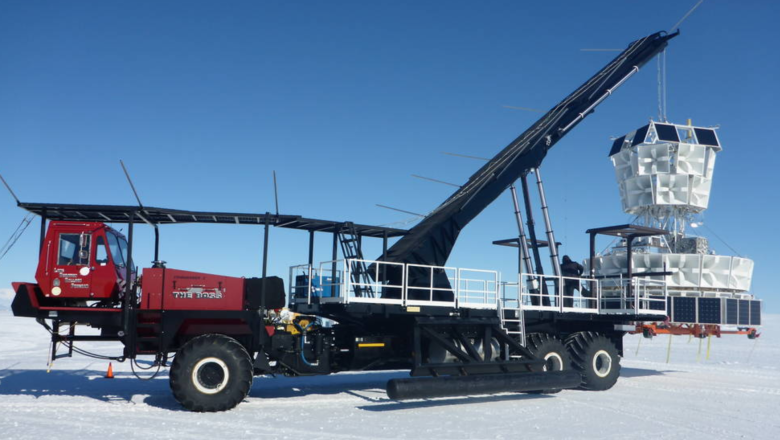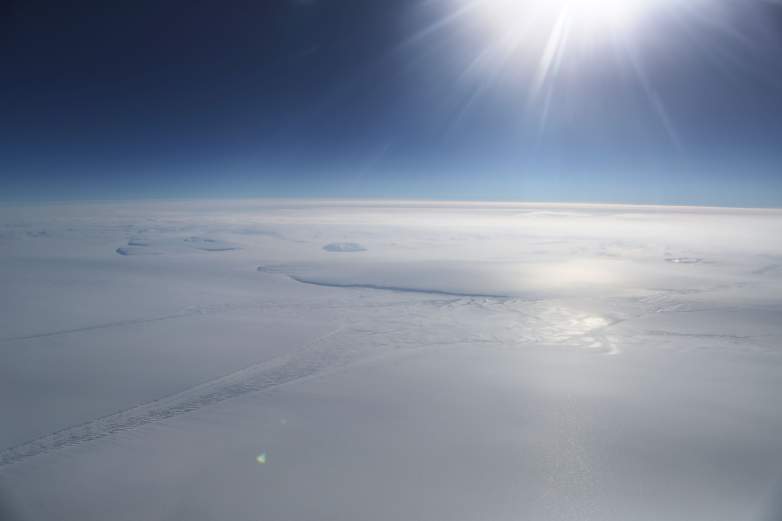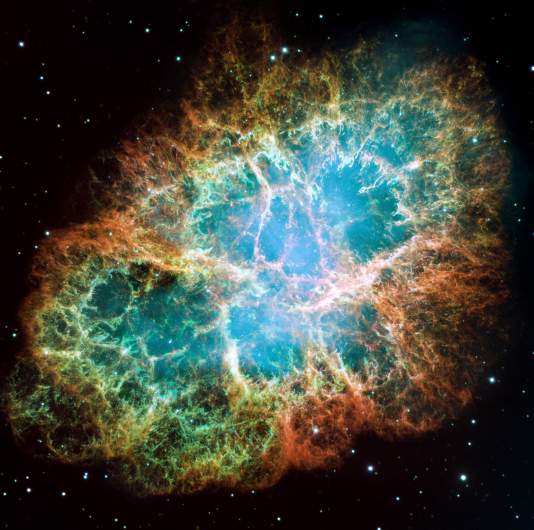
Science fiction and actual science may be aligning. That’s because NASA scientists have discovered something they can’t explain but that others take as a sign that they may have found evidence of a parallel universe.
This discovery was made by the NASA-sponsored research group Antarctic Impulsive Transient Antenna, or ANITA. The group was funded for $35 million in 2003 to look for and study “ghostly particles that fill the universe,” according to NASA. The project uses a specially made balloon that “detects radio waves emitted when high-energy neutrinos interact in the Antarctic ice shelf,” NASA reported. The mission is being led by Peter W. Gorham of the University of Hawaii at Manoa in Honolulu.
Antarctica was the chosen place for study because of its “cold dry air where there is little or no radio noise to distort its findings,” according to the Daily Star, who reported, “there is a constant ‘wind’ of high energy particles coming from outer space – some of which are a million times more powerful than anything we can generate ourselves.”
According to New Scientist, the balloon, which holds antennae, would go up for a month and scan thousands of miles of antarctic air looking for high-energy particles coming down from space. After two flights over more than two years, the results only yielded brief moments of background noise but nothing else.
During the balloon’s third flight, scientists decided to look over the data from the previous flights again — specifically at the random noises it recorded. What they discovered, according to New Scientist, was something impossible. The signal wasn’t coming down from space but up from the ground.
“That means that these particles are traveling back in time and could be evidence of a parallel universe,” Tech Times reported.
However, Gorham told the University of Hawaii News that no one in his team is making that claim, only that they don’t yet know what the findings are. He said:
Unfortunately, the journalism on this has not distinguished very well between our experimental work which identified some anomalies in the data, and the theory proposed by some physicists who are not a part of our collaboration. While I am not opposed to free speculation regarding the anomalies we have observed, our own opinion is that they are more likely to be explained in terms of physics, that is likely to be much less exotic.
Researchers Ruled Out All the Other Explanations They Could Think Of

GettyIce is seen from NASA’s Operation IceBridge research aircraft in the Antarctic Peninsula region on November 4, 2017, above Antarctica.
The inexplicable findings were made in 2016, and for years various explanations have been put forth and ruled out, according to New Scientist.
The publication wrote, “Explaining this signal requires the existence of a topsy-turvy universe created in the same big bang as our own and existing in parallel with it. In this mirror world, positive is negative, left is right and time runs backwards.”
It’s extremely rare that the signal might happen once, but the research team saw the phenomenon happen time and time again, leaving them with limited explanations, according to TechTimes.
Theoretical Physicist George Ellis is skeptical that parallel universes exist. He wrote in the journal, Nature, that it’s not knowable given humanity’s limited ability to see beyond our own universe, saying:
We do not know how to test which is right, if any, because we cannot make direct observations of domains beyond the observational horizon — the greatest distance that light can have travelled towards us since the Universe became transparent to radiation 300,000 years after the Big Bang. Given this lack of evidence, there is a viable…option: that there is no multiverse at all.
Some Scientists Don’t Think the Idea of a Parallel Universe is That Far Fetched

GettyIn this handout from NASA, the mosaic image, one of the largest ever taken by NASA’s Hubble Space Telescope of the Crab Nebula, shows the six-light-year-wide expanding remnant of a star’s supernova explosion as released December 2, 2005.
The scientific understanding of the Big Bang Theory includes the possibility that one or more parallel universes exist. This theory is referred to as ‘multiverse,’ in which many universes can live alongside each other.
According to the website Space, there are several theories for alternate universes, including infinite universes.
“We don’t know what the shape of space-time is exactly,” Space reports. “One prominent theory is that it is flat and goes on forever. This would present the possibility of many universes being out there. It’s possible that universes can start repeating themselves. That’s because particles can only be put together in so many ways.”
Physicist Brian Greene, who wrote The Hidden Reality: Parallel Universes and the Deep Laws of the Cosmos, told NPR in 2011, “there are only so many ways matter can arrange itself within that infinite universe. Eventually, matter has to repeat itself and arrange itself in similar ways. So if the universe is infinitely large, it is also home to infinite parallel universes.”
A multiverse theory that Greene thinks is promising is String Theory, which works to iron out mathematical inconsistencies between two accepted scientific theories that don’t work together, quantum mechanics and the theory of relativity.
Forbes describes String Theory as “the thread of an idea that’s run through physics for centuries, that at some fundamental level, all the different forces, particles, interactions and manifestations of reality are tied together as part of the same framework.”
READ NEXT: New Study Finds Immunity to Coronavirus Linked to the Common Cold